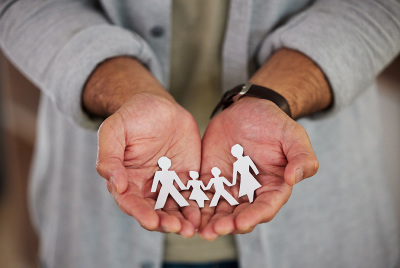Int'l adoption rates have plummeted: What can Christians do?

When the Iron Curtain fell in 1989, it revealed another wall unseen for decades. Tens of thousands of children living behind the walls of orphanages across Eastern Europe were seen for the first time, and it was a heartbreaking sight. Years of institutionalization left generations of boys and girls scarred and aimless.
Western organizations such as Buckner International moved into countries like Russia to serve these orphans. At first, our approach was intercountry adoption. From 1995 until Russia closed these adoptions in 2013, Buckner placed more than 350 children in U.S. homes. But 350 children out of more than 1 million wasn’t enough, and intercountry adoption couldn’t be the only solution.
Wanting to serve more children, we began training orphanage workers and introducing in-country, family-centered care — a holistic approach to supporting children and their parents. That model aligns with our belief that every child belongs in a family, not an institution.
International adoptions have fallen drastically from their peak in 2004. Still, it’s often seen as one of the most tangible and sacrificial ways Christians carry out the instructions in the book of James to support the orphan. It’s a concept Christians easily connect with, but many are unaware that vulnerable children can be supported in their own countries. Research shows that 4 of 5 children in orphanages have living families — families that could raise their children with some support.
That means while international adoption rates have drastically decreased in the last two decades, the opportunities to help vulnerable children in these countries haven’t. An alternative exists, one that allows children to stay with their families and thrive in their communities, connected to their own culture.
In 2004, 22,988 intercountry adoptions took place in the U.S. In 2023, the total was 1,275 — a 95% drop. For most Americans, the change seems shocking and confusing.
The rapid decline of international adoption rates stems from a myriad of complex and nuanced reasons, yet a few stand out. The 1993 Hague Convention, an international agreement to improve and safeguard children in the intercountry adoption process, resulted in slowed adoptions as countries worked to become compliant with the new standards. Many adoption programs halted because irregularities were found.
Some larger international adoption agencies in the U.S. have shifted their models and resources to support vulnerable children in families and local communities in an attempt to deinstitutionalize them, while many smaller agencies shuttered because of increased regulations. In some countries, the number of domestic adoptions is increasing; in others, world events, crises, or political maneuvering are playing a role. Additionally, corruption, prohibitive costs, and extended wait times are leaving children stranded.
We applaud and recognize the beauty of international adoption for those who made it a part of their family’s story. Yet we must acknowledge that most of the 5 to 8 million children in orphanages today will not have this same story. International adoption as a model was never going to be a widespread solution, and today it’s even less viable. Still, opportunities abound for helping children around the world, and U.S. Christians have a key role to play.
If we want to help vulnerable children, we can support organizations that strengthen their families and communities. At Buckner, we focus on three pillars — protect children, strengthen families, and transform generations.
Family and community-based care models accomplish those three goals by offering a broad range of services, from education, childcare, and mentoring to job and financial training, health care, and various social services. When biological families are equipped and empowered to care for their children, everyone does better.
By supporting this model, we actively help keep children out of the orphanage system. And for those already in such a system, we can create lasting and generational change by shifting resources toward local, family-oriented programs and, when needed, encouraging and celebrating domestic adoptions.
Children belong in families. It’s where they thrive. However, the solution to the number of children still in orphanages around the world will not be solved by international adoptions alone. It is time for U.S. Christians to wholeheartedly embrace family-strengthening initiatives — the viable and sustainable alternative. Each of us can help vulnerable families right where they are, from right where we are.
Dr. Albert Reyes, president and CEO of Buckner International.




















